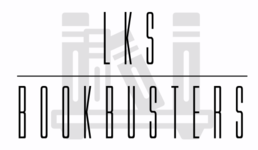Difference between revisions of "ANLY482 AY2017-18T2 Group19 Project Overview"
| Line 66: | Line 66: | ||
<div style="background: #FFFFFF; padding: 15px; font-weight: bold; line-height: 0.3em; text-indent: 15px;letter-spacing:-0.03em;font-size:16px;id:UT1"><font face='Century Gothic' color=#000000 ><u>MOTIVATION</u></font></div> | <div style="background: #FFFFFF; padding: 15px; font-weight: bold; line-height: 0.3em; text-indent: 15px;letter-spacing:-0.03em;font-size:16px;id:UT1"><font face='Century Gothic' color=#000000 ><u>MOTIVATION</u></font></div> | ||
| − | + | As active users of the library for 4 years, SMU Libraries has consistently been providing us with ample amounts of resources which have helped us greatly throughout our education in SMU. Like our peers, we have been heavily reliant on the resources only available in the library for revisions and homeworks. The course reserve consists of materials that have been classified as compulsory readings by professors, and hence essential for the course itself. Typically, these books are rather expensive, and thus, by providing these resources, SMU Libraries provides a cheaper alternative for us cost-conscious students. We feel eternally grateful to SMU Libraries for providing us with the relevant materials. We eagerly adopted this project as this project allows us an opportunity to give back to SMU Libraries. | |
| − | |||
| − | |||
Furthermore, we are able to understand the problems users might have faced during the process of borrowing the course reserves. Hence, we are committed towards analyzing the loan data and ultimately providing useful insights for the library to improve the current policies, and this project has given us the opportunity to do so. Our fellow schoolmates will have a better user experience while the library continues to adhere to its ‘just in time’ access policy. | Furthermore, we are able to understand the problems users might have faced during the process of borrowing the course reserves. Hence, we are committed towards analyzing the loan data and ultimately providing useful insights for the library to improve the current policies, and this project has given us the opportunity to do so. Our fellow schoolmates will have a better user experience while the library continues to adhere to its ‘just in time’ access policy. | ||
Revision as of 11:19, 28 February 2018
[[BACKGROUND]] |
Our client, SMU Libraries, offers its services through 2 separate physical libraries located on the SMU campus, namely Li Ka Shing Library and Kwa Geok Choo Law Library. SMU Libraries remains the centre for academic and professional knowledge resources and services that support the research and learning needs of the SMU community. As such, they possess a variety of resources including books and course reserve materials and a range of learning spaces.
The client, SMU Libraries, aims to be able to consistently offer an improved user experience by ensuring that library users have access to library resources. The main policy currently enacted in this aspect would be the library’s collection policy which outlines the scope of what resources are appropriate to acquire and to retain in fulfillment of the SMU Libraries’ mission and vision. One type of resource in question is the course reserve collection section. This project aims to analyze the usage volume, usage patterns and usage ratio of these course reserve materials over a period of time, and ultimately, be able to provide them insights into their collection policy. (Further analysis may also include the comparison between a 3-hours-loan and print 3-days-loan, which may give the team insights on their loan policy.)
As active users of the library for 4 years, SMU Libraries has consistently been providing us with ample amounts of resources which have helped us greatly throughout our education in SMU. Like our peers, we have been heavily reliant on the resources only available in the library for revisions and homeworks. The course reserve consists of materials that have been classified as compulsory readings by professors, and hence essential for the course itself. Typically, these books are rather expensive, and thus, by providing these resources, SMU Libraries provides a cheaper alternative for us cost-conscious students. We feel eternally grateful to SMU Libraries for providing us with the relevant materials. We eagerly adopted this project as this project allows us an opportunity to give back to SMU Libraries.
Furthermore, we are able to understand the problems users might have faced during the process of borrowing the course reserves. Hence, we are committed towards analyzing the loan data and ultimately providing useful insights for the library to improve the current policies, and this project has given us the opportunity to do so. Our fellow schoolmates will have a better user experience while the library continues to adhere to its ‘just in time’ access policy.
SMU libraries’ mission includes possessing the capability in providing seamless access to information using innovative and leading edge technology. They are committed to delivering exceptional services and building dynamic relationships with the SMU community. As such, they are constantly seeking out ways in which they can improve users’ experience in the libraries. Experience is derived not only in terms of the provision of space for users to study in, but also in terms of the quality of materials available to the users. This project focuses on the provision of printed course reserve materials by analyzing the sufficiency of the loan periods assigned. A poor choice of loan period will result not only in dissatisfaction on the part of the library’s patrons, but also in increased costs for the library such as those resulting from increased record keeping.
This project ultimately aims to design a dashboard that enables the following analysis:
- Usage analysis of print Course Reserve materials
* Pattern of usage for each individual book * Unique users borrowing * Analysis of in-house usage * Number of borrows against time * Finding out if there are same users borrowing the same book title on the same day
- Usage comparison between print-3-hours-loan and print-3-days loan
* Analysis of the usage ratio * Turnover rate of both 3-hours and 3-days loan
- Data collection
- Data cleaning
- Exploration of data
- Data visualisation
